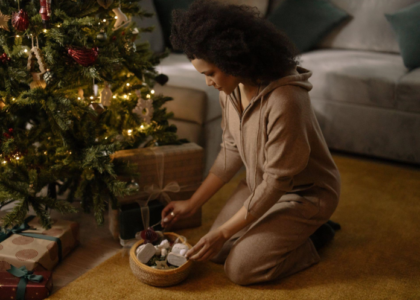The Costs: Real vs. Artificial Christmas Trees
Regarding the cost of Christmas trees, it’s essential to consider the upfront and long-term expenses. Real trees tend to be cheaper upfront, with prices ranging from $25 to $100 depending on the size and type of tree. However, real trees also require additional costs, such as a tree stand, water, and transportation.
On the other hand, artificial trees can be a more expensive upfront purchase, with prices ranging from $50 to $500. However, they are reusable and can last several years, making them a better long-term investment. Plus, there are no additional costs for water or transportation.
It’s important to note that the cost difference between natural and artificial trees may vary depending on your location and the availability of both options.
The Environmental Impact: Real vs. Artificial Christmas Trees
The environmental impact of Christmas trees is often a topic of debate. Here’s a breakdown of the pros and cons of both natural and artificial trees.
Real trees:
Pros:
– They are biodegradable and can be recycled in many communities.
– They support local farmers and the agricultural industry.
– They have a natural scent and beauty that cannot be replicated.
Cons:
– They require cutting down a new tree each year, contributing to deforestation.
– They require transportation, which creates carbon emissions.
– They may bring indoor pests into your home.
Artificial trees:
Pros:
– They are reusable, reducing the yearly need to cut down new trees.
– They do not require water or transportation, reducing carbon emissions.
– They come in various sizes and styles, allowing for customization.
Cons:
– They are made of plastic, which can take hundreds of years to decompose in landfills.
– They are often produced overseas, increasing carbon emissions from transportation.
– They do not have a real tree’s natural beauty or scent.
It’s worth noting that the environmental impact of Christmas trees also depends on how they are disposed of at the end of their use. Real trees can be chipped into mulch or composted, while artificial trees can be donated or recycled.
Choosing between natural and artificial trees comes from personal preference and values. If you prioritize supporting local agriculture, prefer a real tree’s natural beauty and scent, and don’t mind the yearly expense, a real tree may be the best choice. However, an artificial tree may be better if you prioritize sustainability, want a long-term investment, and prioritize convenience.
Whether you choose, decorating your tree with eco-friendly LED lights and recyclable ornaments is essential. This will ensure that your Christmas tree is as green as possible, whether natural or artificial.
In conclusion, the cost and environmental impact of Christmas trees is essential to consider when deciding. By weighing your values and budget, you can make an informed choice that aligns with your priorities. Happy decorating!
Best Artificial Christmas Trees 2023
You can read more about this topic on a Christmas Blog.






Recent Comments